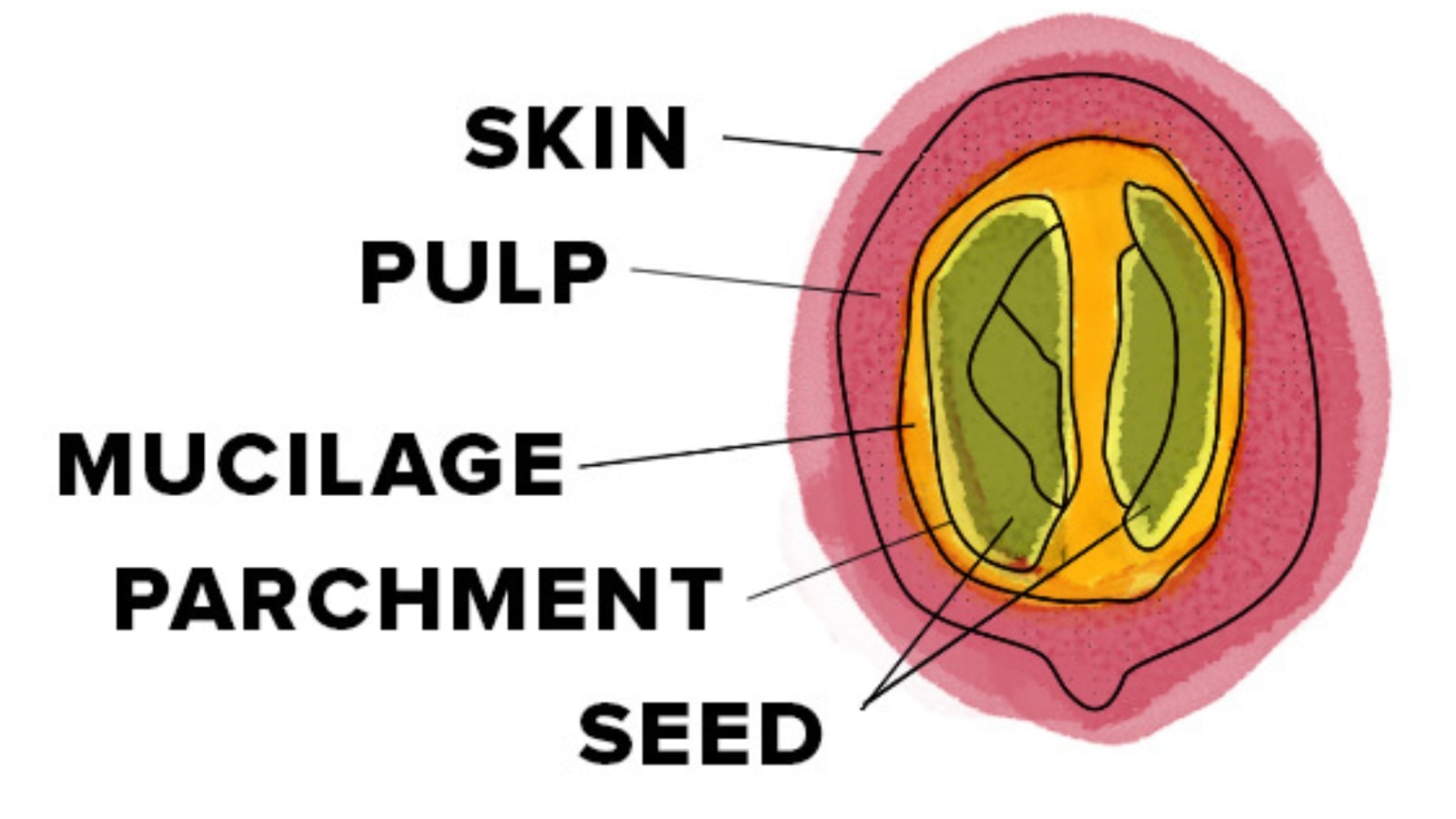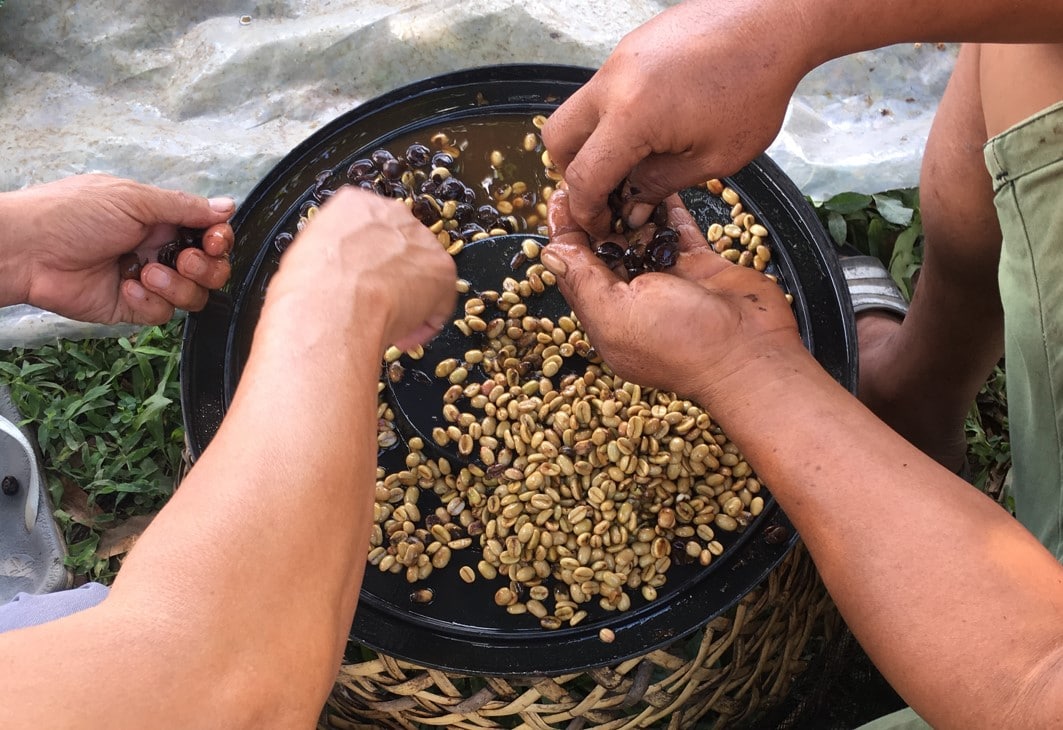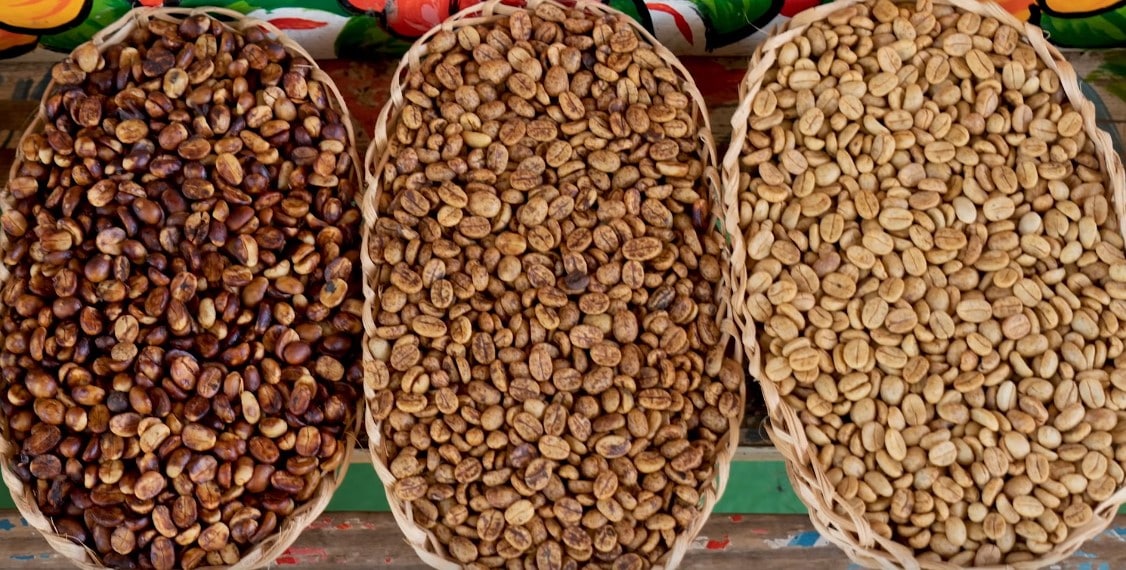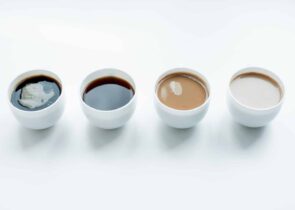Since when is it okay to drink coffee with pulp? And did that Costa Rican pour-over really have honey in it?
Burning questions for a then-newbie barista, but I was always keen to explain strange coffee names and terminology. For instance, the words pulp and honey refer to two similar methods of post-harvest coffee processing, not add-ins to your brew.
If none of that made sense to you, don’t look away just yet. Pulped natural and honey process coffees have a lot to offer the coffee drinker, and both are here to stay! Let’s learn more about them, shall we?

Key Takeaways
- Pulped natural and honey processes are coffee processing methods that leave the mucilage layer on the bean, influencing flavor and requiring less water than traditional methods.
- The pulped natural process, a Brazilian innovation, creates a consistent, medium-low acidity flavor, while the honey process from Costa Rica offers a spectrum of sweetness and body depending on mucilage left on the bean.
- Understanding the impact of coffee processing on flavor can broaden one’s appreciation and enhance the coffee-drinking experience.
Coffee Processing
Let’s kick this off with a quick refresher on coffee production. The coffee bean as we know it is the seed of a flowering fruit called the coffee cherry. Farmers pick the ripest cherries and send them to the mill for processing.
The main objective of coffee processing is two-fold: to remove the coffee cherry’s exterior layers and create sensory characteristics in the coffee bean through fermentation. This shapes how the coffee will smell and taste once it’s roasted and brewed.

The two classic methods used for coffee processing are washed or wet, and natural or dry. Before we jump right into the newer processing methods, let’s briefly discuss the two originals.
Washed Process
After the cherries are harvested, the entire fruit is pulped (stripped to the seed) and washed. The seeds are then held in fermentation tanks anywhere between 12 to 72 hours, where wet fermentation takes place.
As you might surmise from the name, this method uses a lot of water for pulping and fermentation. However, unripe green coffee is easiest to identify, as these float to the surface for easy removal.
A nice washed coffee tastes consistent and clean. Also present are crisp and bright flavors, fruit-forward acidity, and sugary sweetness.
Natural Process
Under the natural process, the cherries are sun-dried on raised beds or patios with the skin and pulp intact. This takes up to 30 days, during which dry fermentation occurs between the mucilage and pulpy layers.
This is a water-free process that requires favorable dry conditions. Due to the laborious nature of turning the cherries manually, unripe and inconsistent beans are harder to spot.
Coffees processed this way are typically described as “winey” or “boozy”, with punchy fruit notes and a syrupy body.
Pulped Natural Process
The pulped natural process was developed in Brazil in the ’90s. Producers wanted to bring up the consistency of the country’s natural coffees up to par with washed coffees while using only a fraction of the water.
Water is only used to sort out defective and unripe cherries. The ideal ones that pass muster are then mechanically pulped to remove the skin and the pulp, leaving just the mucilage layer intact.

The sticky beans are moved to raised beds or patios, where they continue to dry and ferment similar to a regular natural process. Since there’s less fruit on the seeds, this takes 10 to 15 days.
Pulped naturals can taste nutty and citrusy, with a syrupy body. Acidity is often perceived as medium-low despite a generally fruity flavor.
Honey Process
The honey process is essentially the same thing as the pulped natural process. It might be more accurate to call it a regional variation that’s popular in Costa Rica instead of Brazil.
This process gets its name from the sticky appearance of the coffee cherry’s mucilage, which producers referred to as miel — the Spanish word for honey. No actual bee honey is used!
Producers also make use of the honey process to create precise and distinctive profiles from the same coffee. This is done by controlling the amount of mucilage left on the bean before drying, normally expressed as a percentage or a designated “color”.

Sweetness and body are generally enhanced if the mucilage is left intact, while clean and crisp flavors become apparent the more it’s removed.
Here are some popular variations on the honey process, along with differences in their flavor profile:
| Type | Mucilage Removal | Drying | Flavor Characteristics |
|---|---|---|---|
| Black Honey | 0% | Covered | Sweet and full-bodied with fruity depth |
| Red Honey | 25% | Uncovered | Sweet and syrupy |
| Yellow Honey | 50% | Uncovered | Floral, light body, apricot |
| Golden Honey | 75% | Uncovered | Crisp, citrusy |
| White Honey | 100% | Uncovered | Clean, balanced |
Similarities: Pulped Natural and Honey
- Both methods remove both skin and pulp, leaving the mucilage layer to ferment
- Less water is used compared to washed processing methods
- Flavor profile is generally between a washed and a natural coffee
Differences: Pulped Natural and Honey
- The name “pulped natural” is almost exclusively used for Brazilian coffee
- The pulped natural process is generally used to create a dependable, consistent flavor profile
- The name “honey” is more popularly used by coffee from Costa Rica, Guatemala, and even Ethiopia
- There are color variations in the honey process where the mucilage layer is tinkered with to create a distinct flavor profile
Wrap-up and Conclusion
We often talk about origin when comparing how coffees taste, but the bigger inspiration for flavor lies in its processing. Methods like honey processing improve on the faults of classic methods while innovating further in the interest of increased quality and sustainability. Good stuff all around.
Why not try out a honey the next time you see it offered at your local cafe?
Happy Caffeinating!







